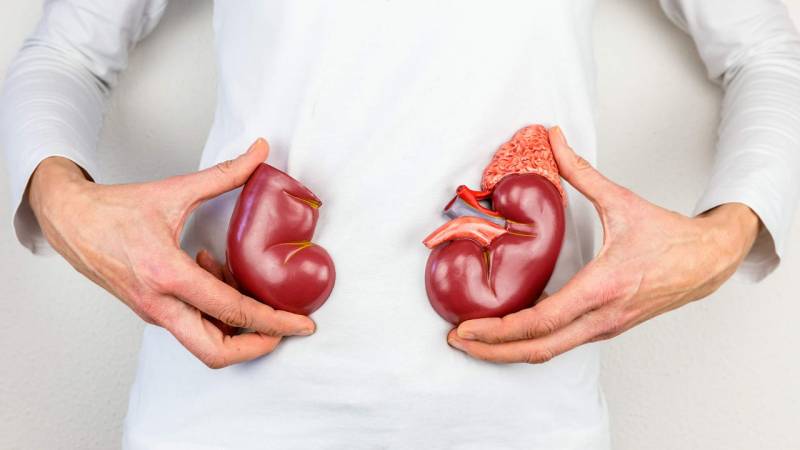Diabetes is a disease that is currently a global health problem. In 2015, 1.6 people died in the world as a direct consequence of diabetes, plus 2.2 million as a consequence of having high blood glucose levels.
The prevalence of this disease has increased considerably in recent years. Specifically, from 1980 to 2014, the number of people with diabetes increased by 108 million.
Low- and middle-income countries are where there has been a greater increase in cases and according to WHO forecasts, by 2030, diabetes will be the seventh leading cause of death in the world.
What is the diabetes?
Diabetes is a chronic and currently incurable disease that appears when the pancreas does not produce enough insulin or when the body does not use insulin effectively. It occurs in that situation in which blood sugar or glucose levels are high.
The glucose that circulates through the blood is called glycemia, and depending on its levels, we can talk about:
Hypoglycemia: Low blood glucose values. Your symptoms appear when your blood glucose level is 55mg/dl or less.
Normoglycemia: Normal blood glucose values. Fasting should be between 70-100mg/dl.
Hyperglycemia: Abnormally high blood glucose values. Higher than 100mg/dl fasting.
When we talk about diabetes, we have on the one hand glucose in the blood, which is the main source of energy, and on the other, insulin, which is a hormone that is produced in the pancreas and that helps glucose from food enter into cells to be used for energy.
Sometimes, the body is not able to produce insulin or not enough, so glucose stays in the blood and does not reach the cells. It is in this situation that diabetes appears.
What is glucose used for?
As we have just mentioned, all cells need energy to be active and maintain their vital functions such as the beating of the heart, breathing, the digestive process... On the other hand, this energy is also necessary to maintain body temperature and muscle movement .
Glucose is the main source of energy for our body. We obtain it from food and it is through digestion that a chain of chemical transformations is set in motion that transforms food into nutrients and these into other smaller elements.
For example, if we eat rice, the nutrients we will obtain will be carbohydrates and later they will become a basic element, in this case glucose.
When we eat, food travels through the digestive tract and when it reaches the small intestine, glucose passes from the intestine to the blood and from the bloodstream to the cells.
The blood is responsible for transporting glucose to the liver where it is stored to have energy reserves, but also to the brain and the rest of the body's cells.
What is insulin and what is it used for?
Insulin is a hormone of the digestive system that is produced in the pancreas and whose mission is to facilitate the entry of glucose into the cells so that it is transformed into energy.
In order for glucose to enter the cells and be used as energy, it needs the mediation of insulin.
Only the brain and the cells of the nervous tissues are the only ones that obtain glucose directly from the blood, without the mediation of insulin.
For insulin to do its job effectively, two conditions must be met:
The pancreas secretes enough insulin
That the cells identify this insulin and allow its action
But in addition to insulin, the pancreas also secretes glucagon, which is another hormone that has exactly the opposite effect of insulin and raises blood glucose levels.
Types of diabetes
There are three main types of diabetes:
Diabetes type 1
Type 1 diabetes is characterized by poor insulin production, requiring daily administration of this hormone.
This poor insulin production is due to the immune system attacking and destroying the cells in the pancreas that produce it. It can appear at any age but is usually diagnosed in children and young adults.
The causes of this type are unknown and with current knowledge it cannot be prevented either. People with type 1 diabetes must take insulin every day to survive.
Its symptoms can appear suddenly and include among others:
- Excessive excretion of urine
- Thirst
- constant hunger
- Weightloss
- visual disturbances
- Fatigue
Type 2 diabetes
Type 2 diabetes is due to ineffective use of insulin. This is the type of diabetes that represents the majority of cases in the world and is largely due to overweight, obesity and physical inactivity.
The symptoms of type 2 diabetes are very similar to type 1 but less intense, which means that in a large number of cases the disease is diagnosed when it has already developed for several years and complications have already appeared.
Gestational diabetes
As its name suggests, gestational diabetes is characterized by increased blood glucose levels during pregnancy.
In this case, the hygerglycaemia reaches values that, despite being higher than normal, are lower than those established to diagnose diabetes.
Women with gestational diabetes are at increased risk of complications in pregnancy and childbirth, but they and their children are also at increased risk of type 2 diabetes in the future.
Risk factors for getting type 2 diabetes
The chances of developing type 2 diabetes depend on several risk factors, including genetics and lifestyle.
Although we cannot change the factors related to genetics, we can change those related to diet, exercise and weight control.
The factors related to the probability of suffering from type 2 diabetes are the following:
overweight or obesity
- If you are over 45 years old
- Family history of diabetes
- If you are African American, Alaskan Native, Hispanic or Latino, American Indian, or Native Hawaiian.
- High blood pressure
- Low HDL cholesterol (good cholesterol) levels or high triglyceride levels
- History of gestational diabetes
- Physical inactivity, sedentary lifestyle
- History of heart disease or cardiovascular accidents
- Depression
- Polycystic ovary syndrome
- If you have areas of dark, thick, velvety skin around your neck and armpits
To prevent this type of diabetes, it is advisable to maintain a healthy weight and lose weight if necessary. It is also recommended to consume fewer calories, do more exercise at least 30 minutes a day of moderate intensity and eat a healthy diet avoiding sugar and saturated fats.




